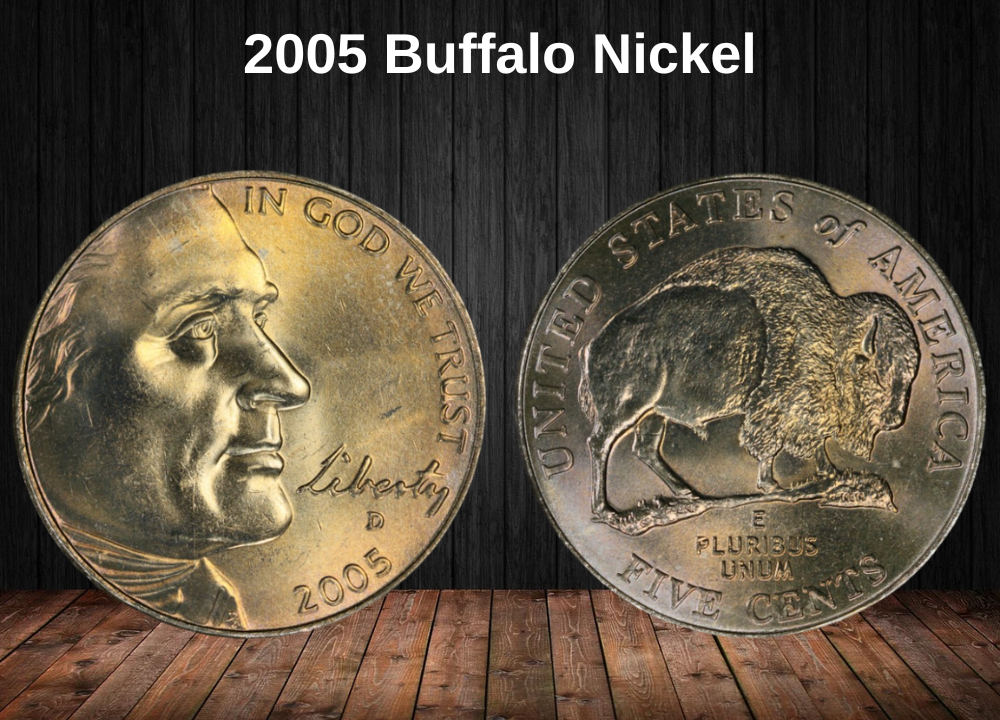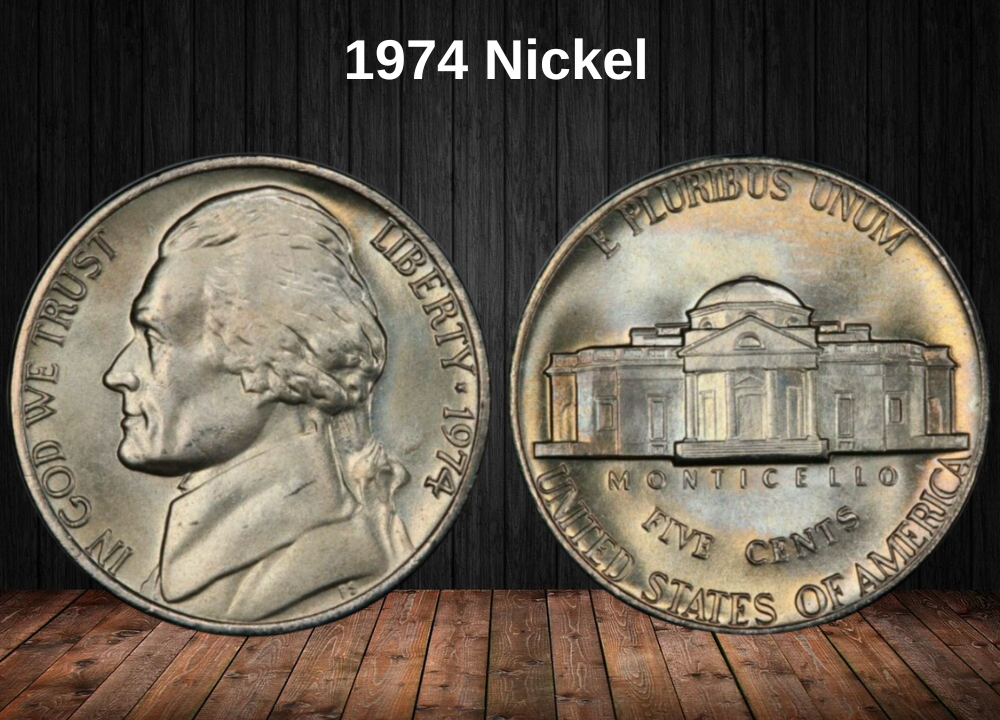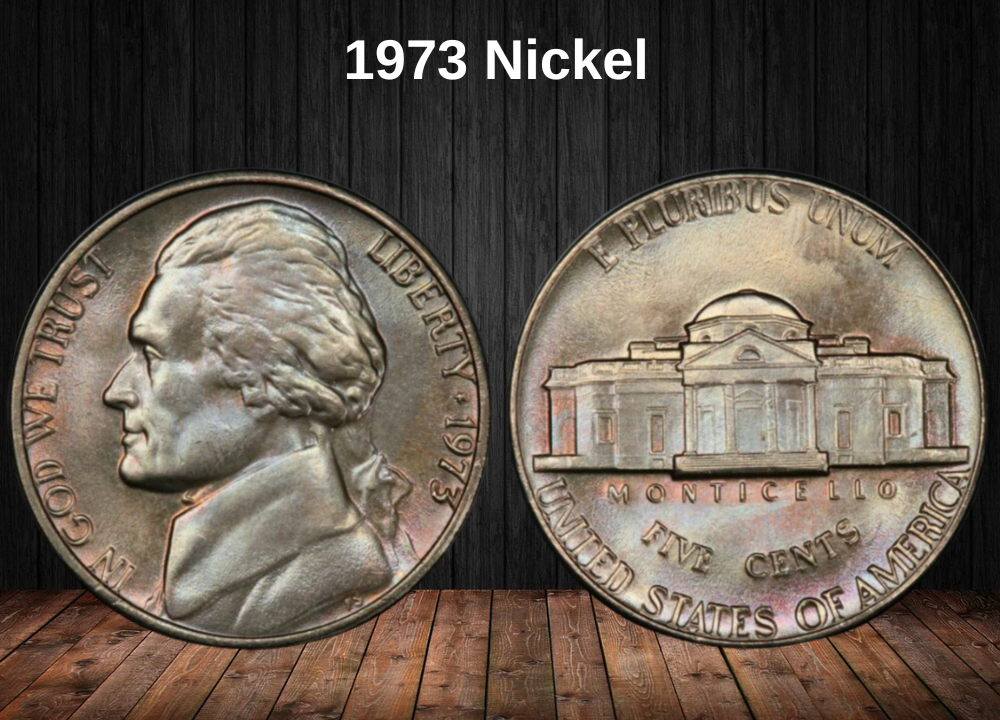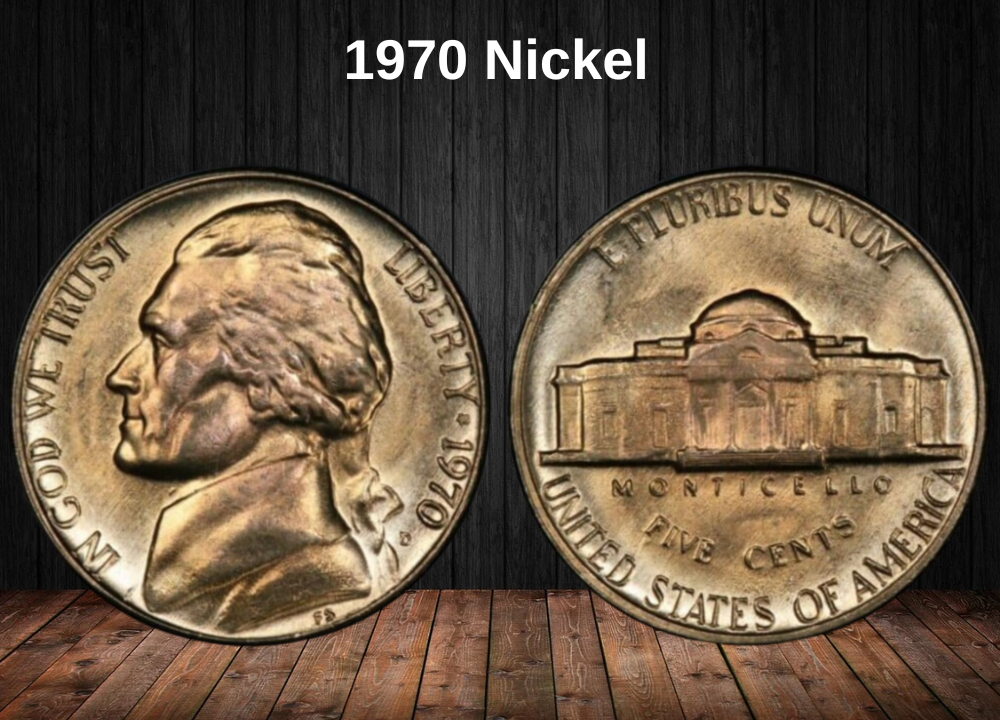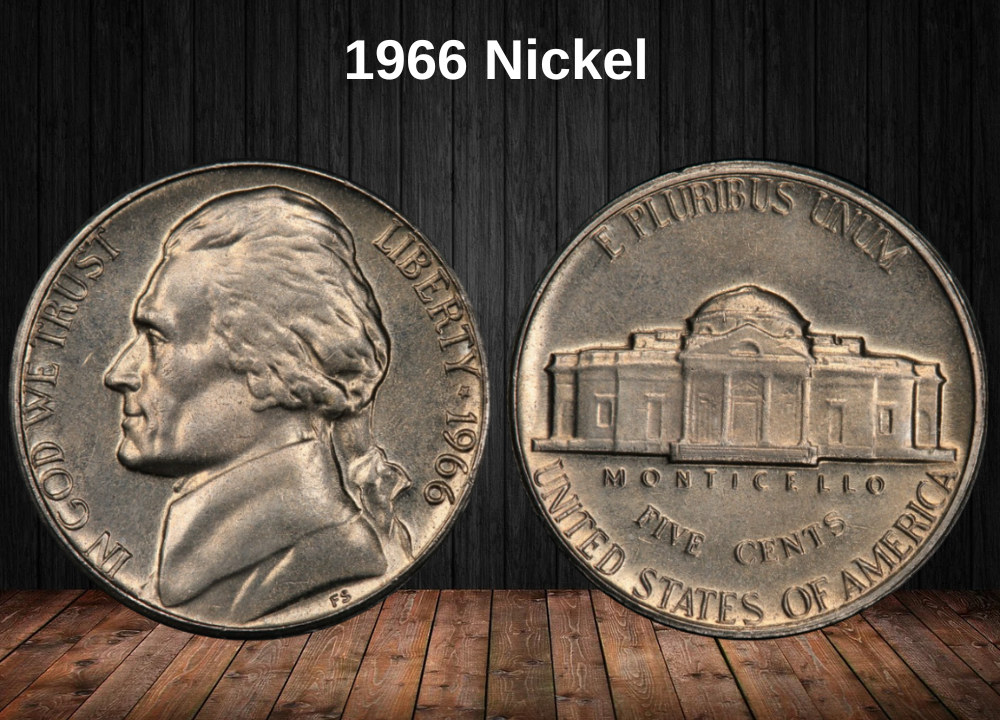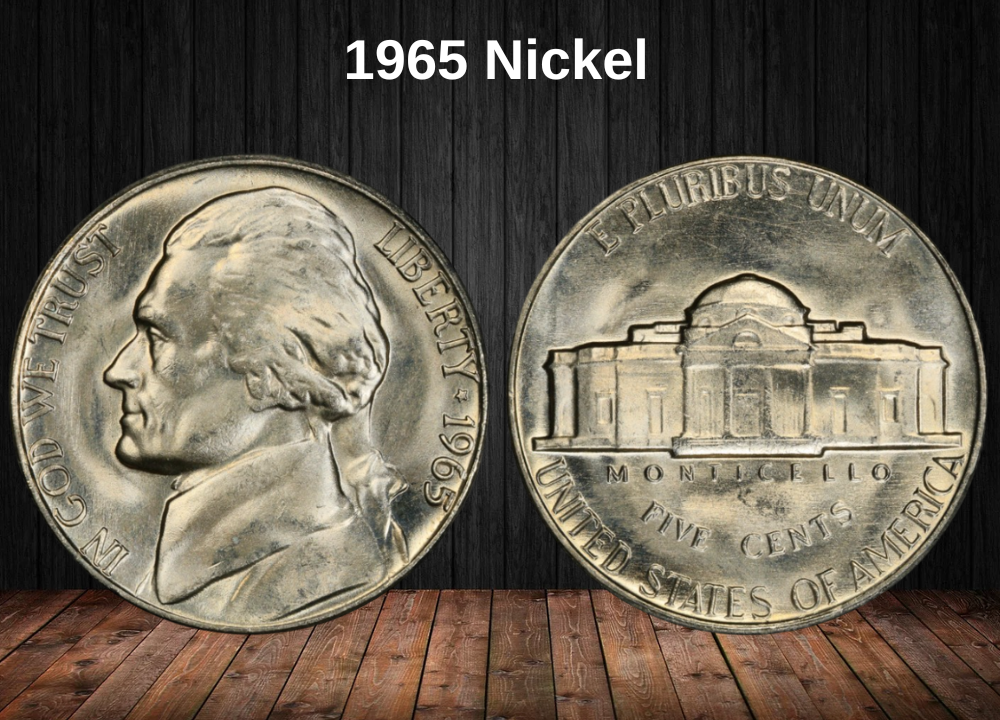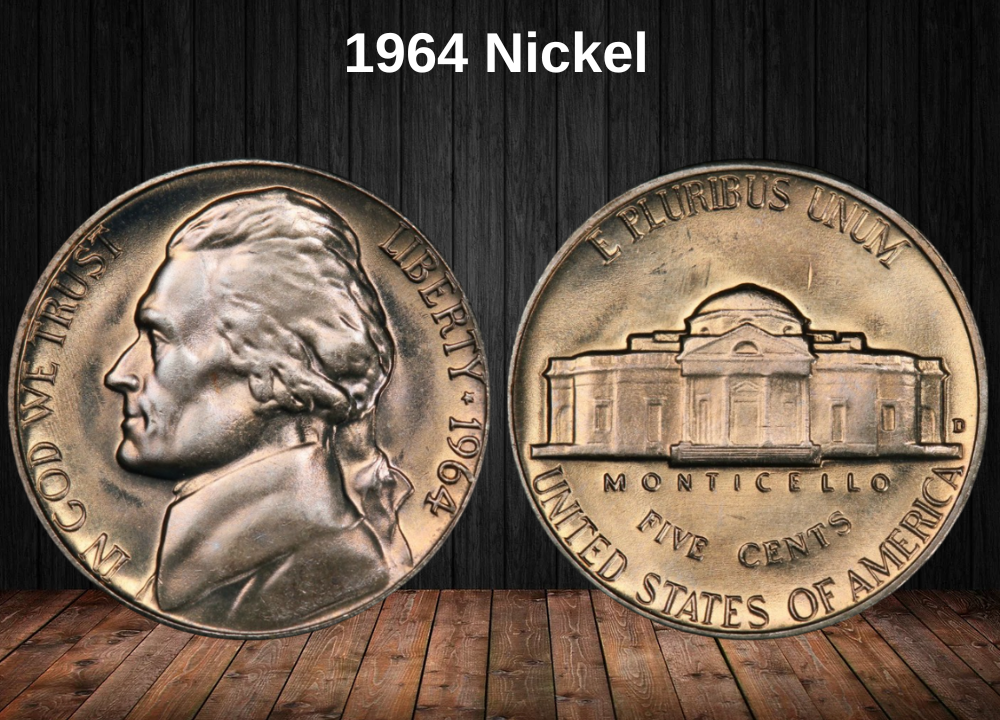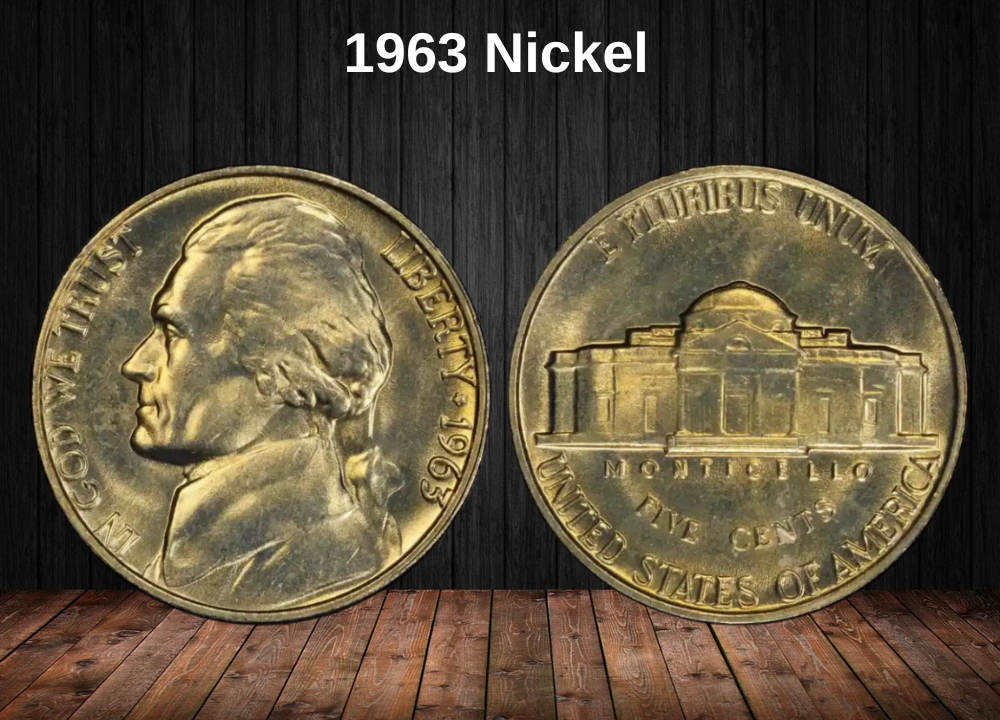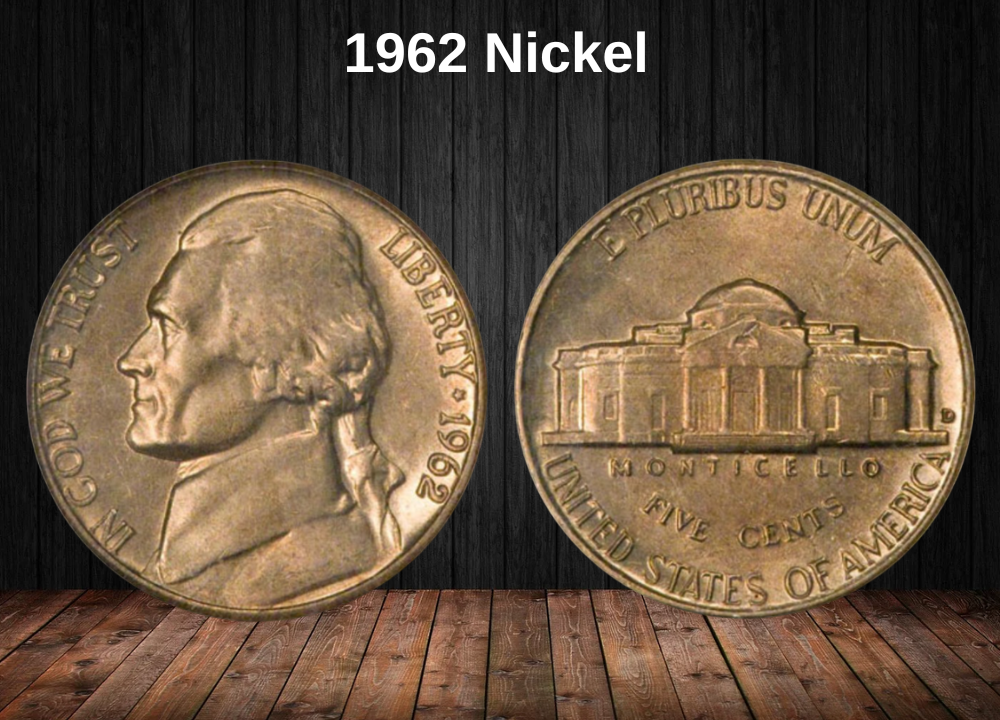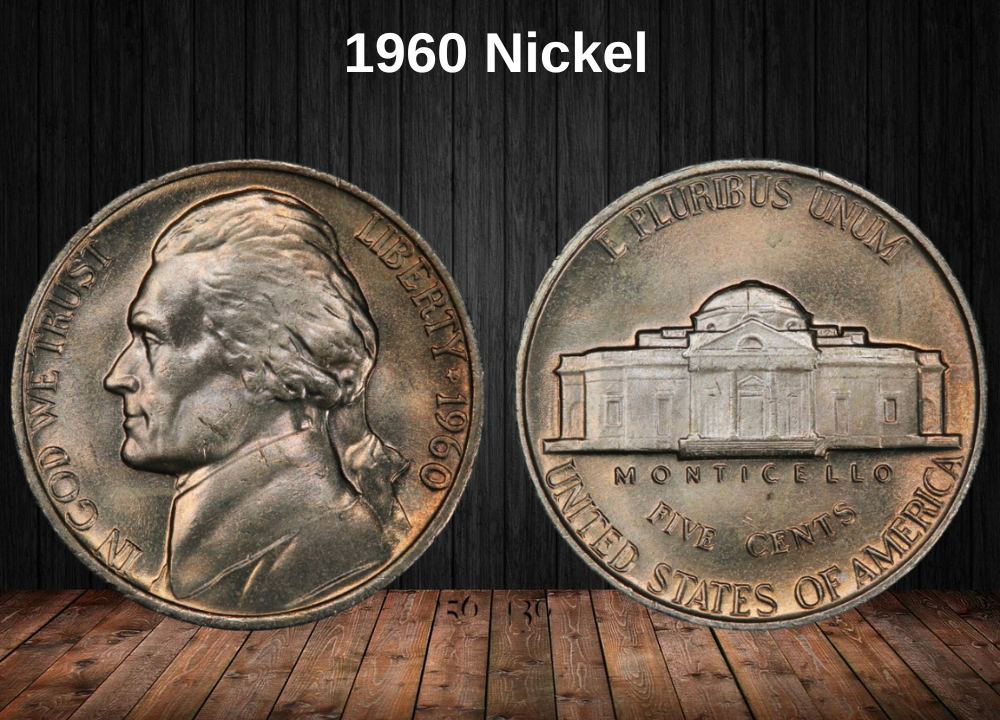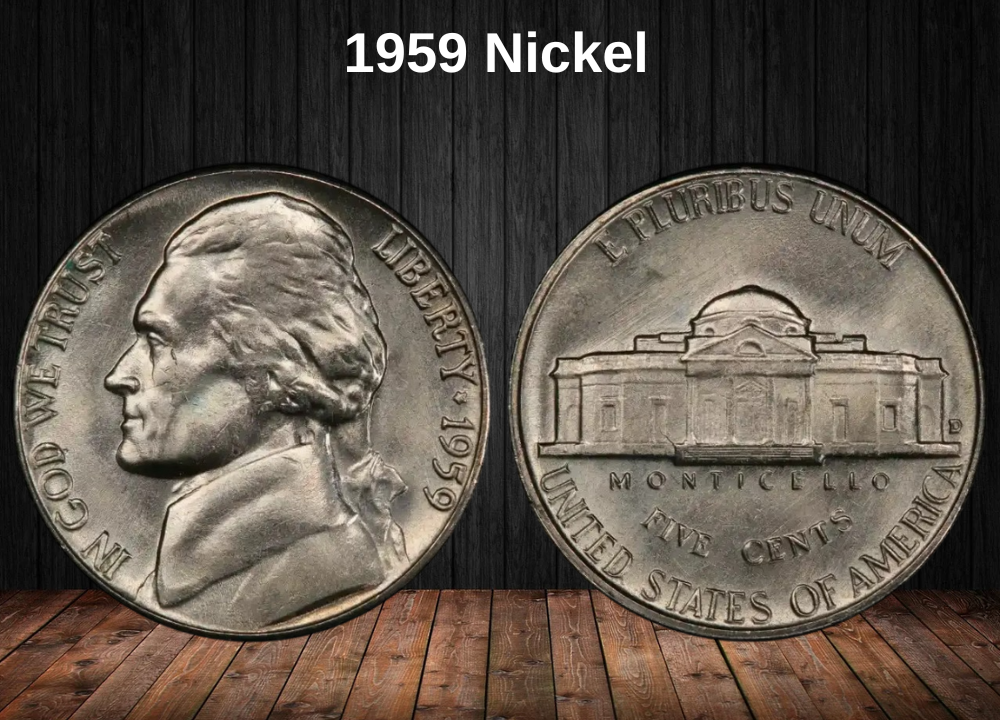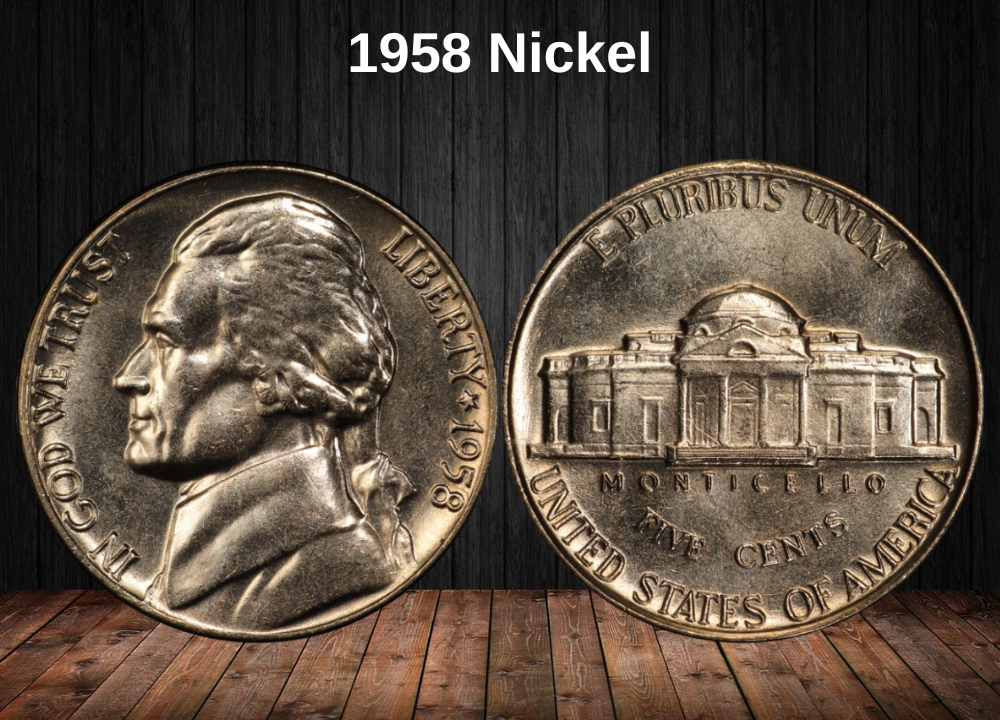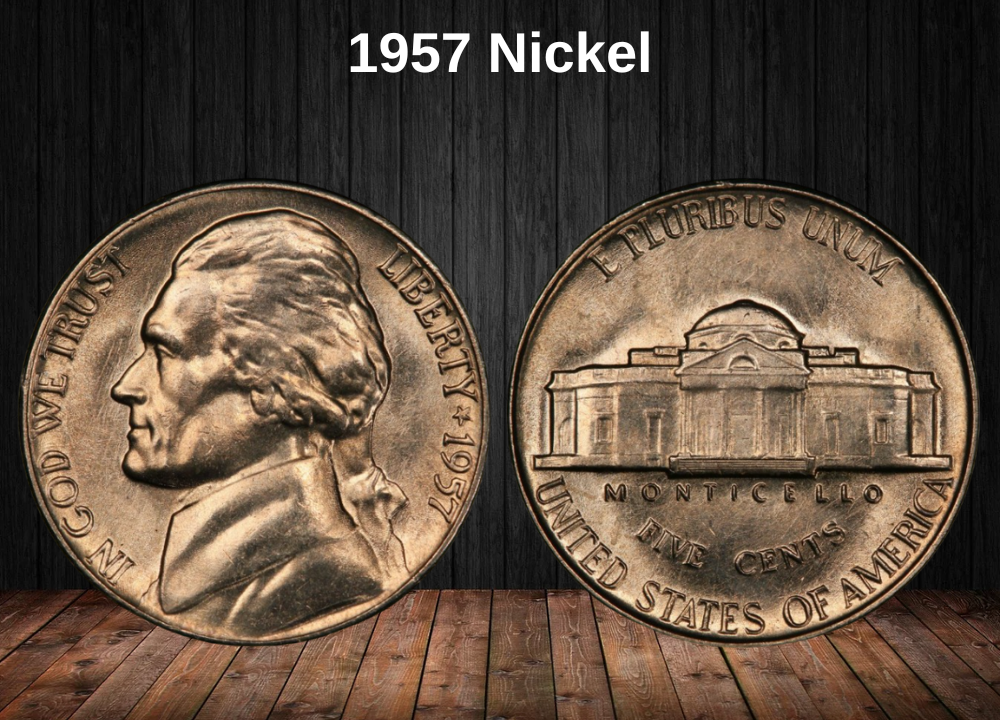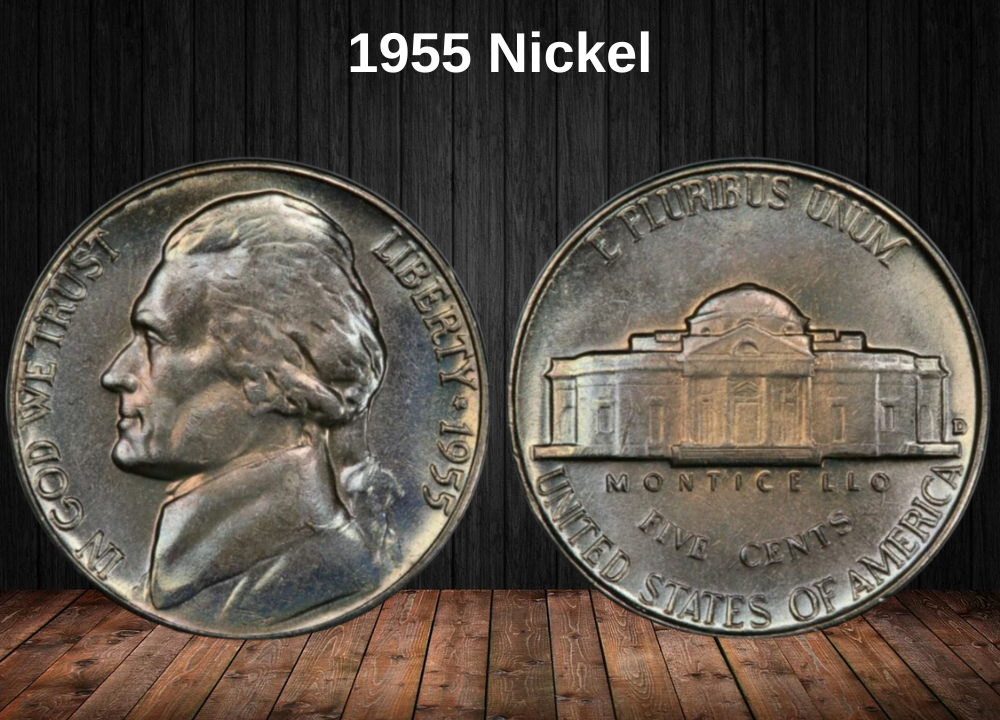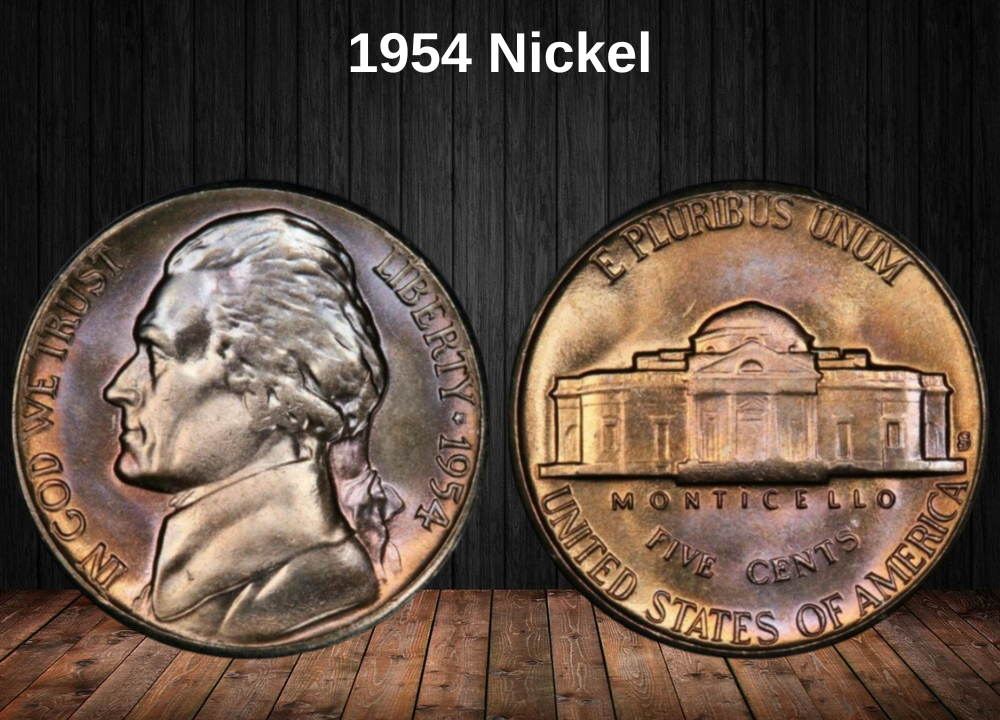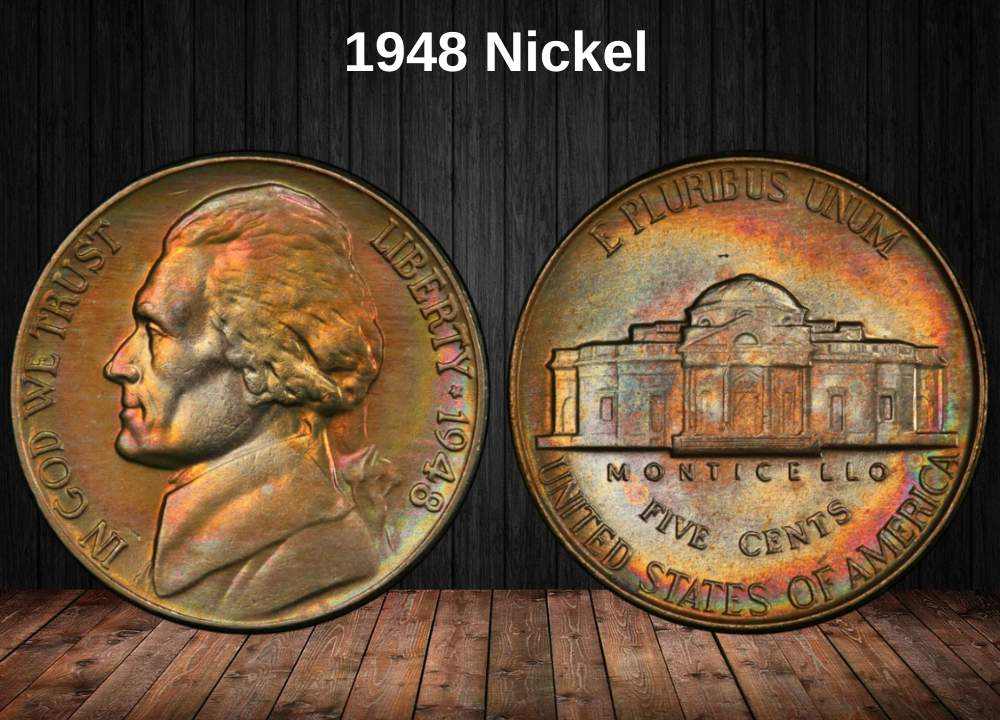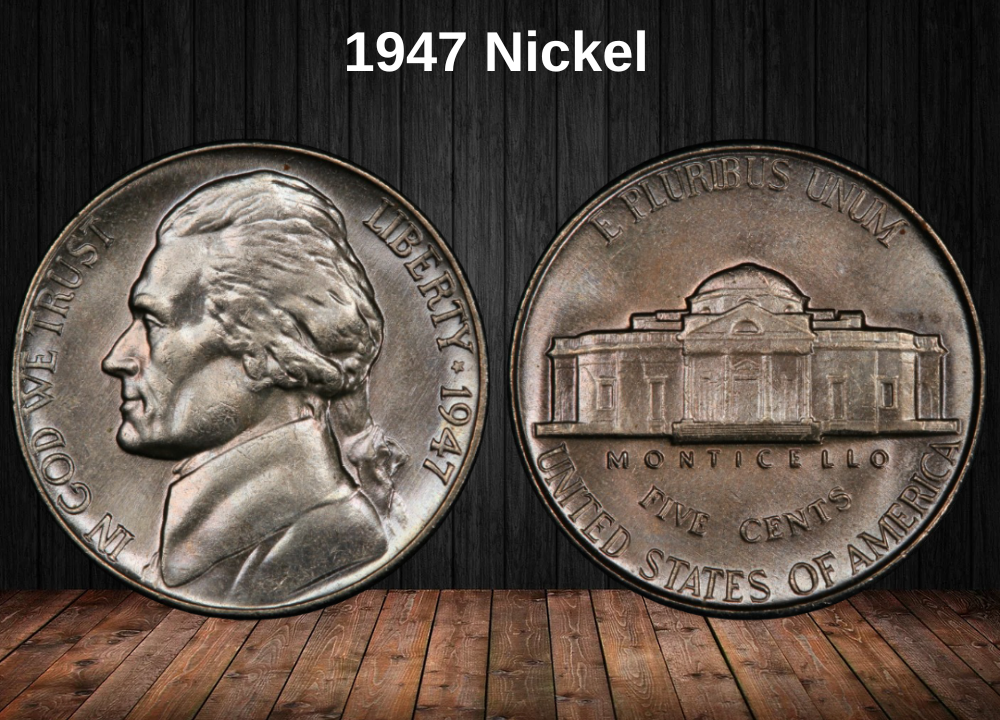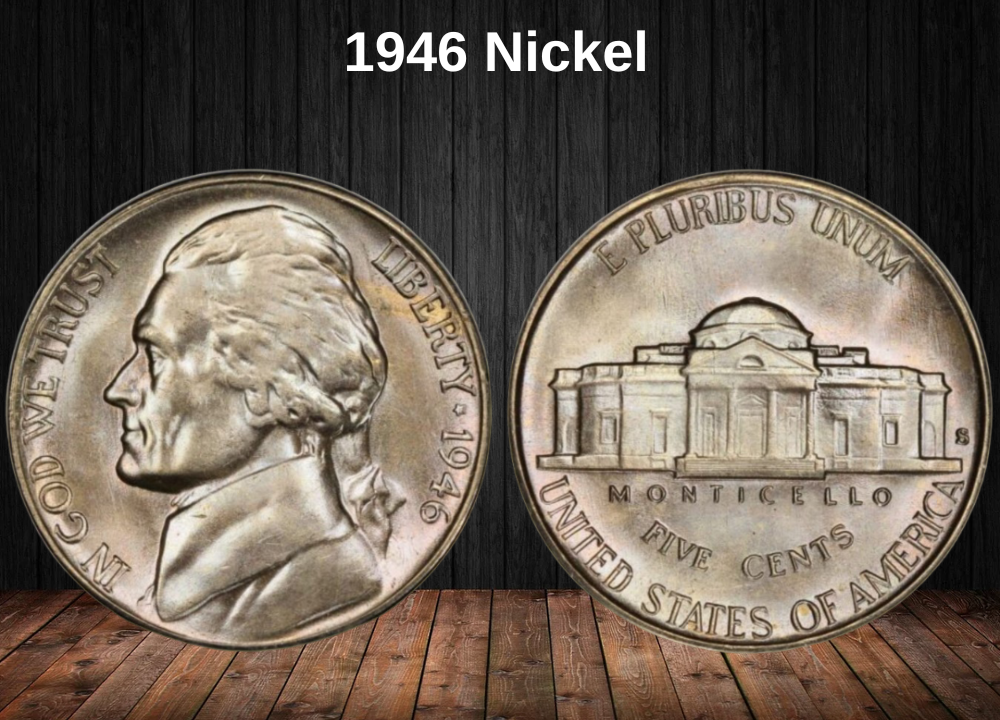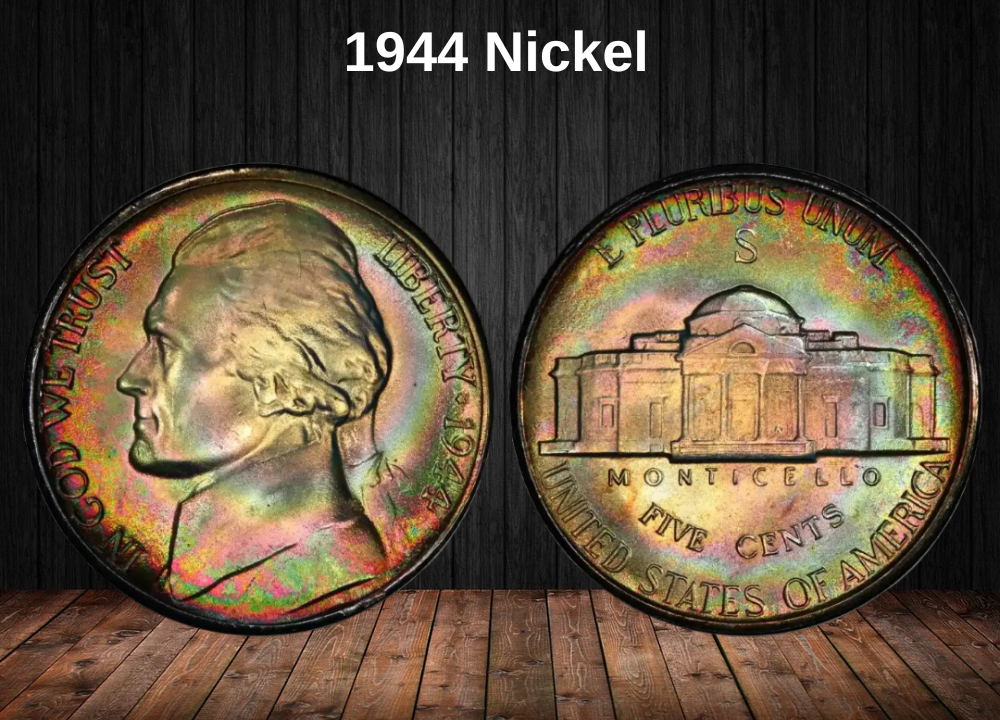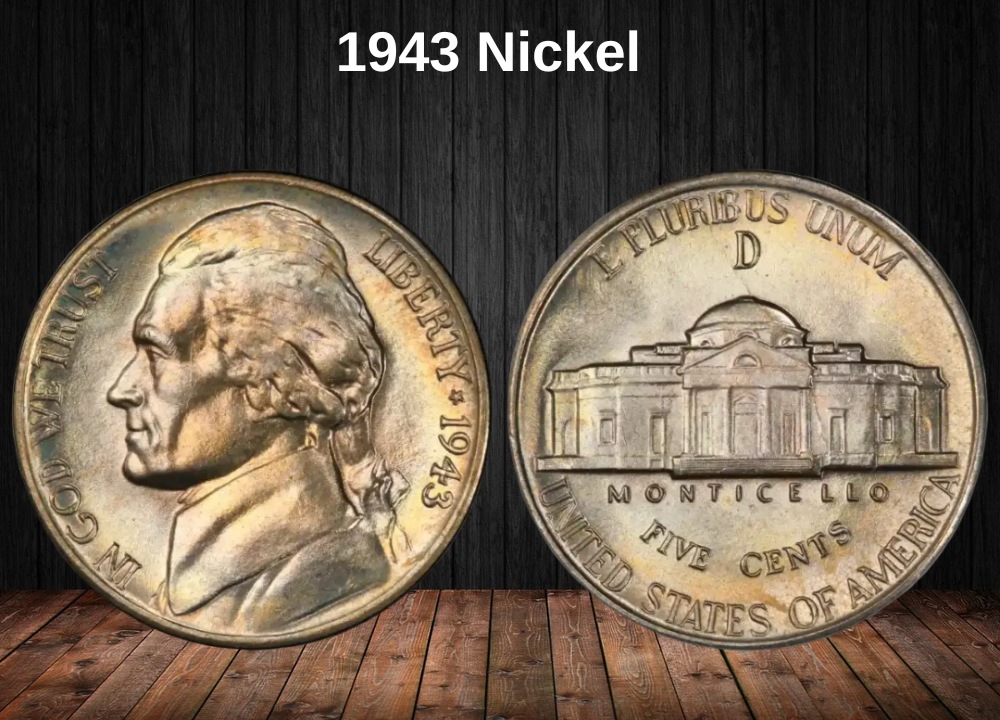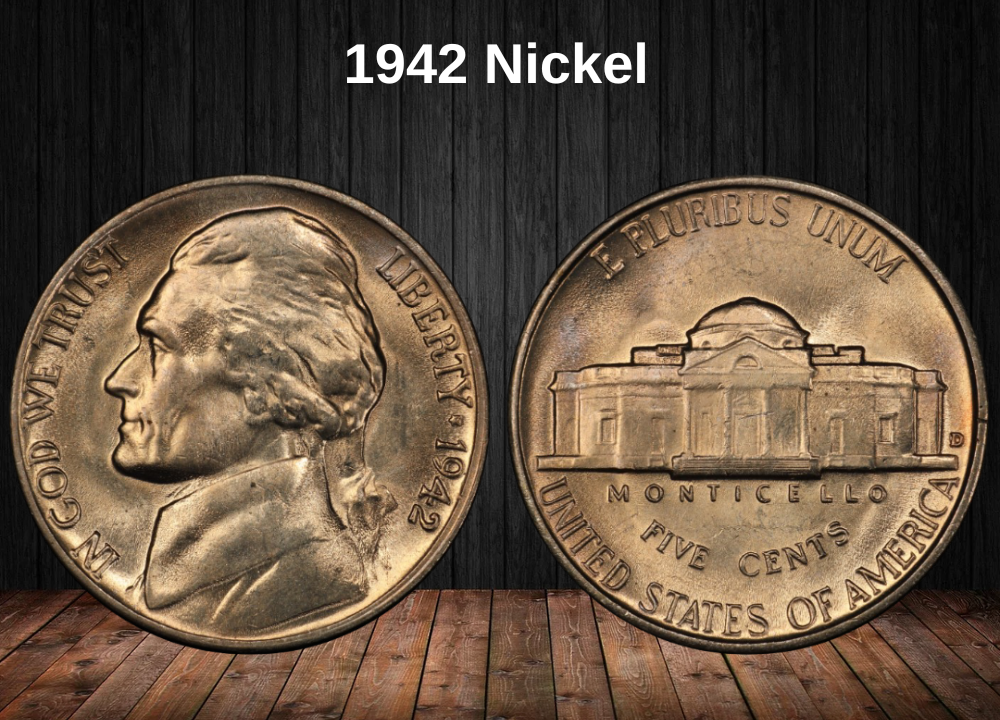The nickel is a five-cent coin in American currency. While it contains more copper than nickel, its bright silver-like shine earned it the nickname “nickel.” This appearance was especially important because early five-cent coins were actually made from silver. When silver prices rose, the U.S. Mint shifted to a more affordable copper-nickel alloy while maintaining the coin’s luxe, silvery look.
Let’s explore the value of the 1952 nickel and dive into its historical background.
1952 Nickel Value Chart
| Coin Type | MS 63+ | MS 64+ | MS 65+ | MS 66+ | MS 67 | PR/PF 69 DCAM |
|---|---|---|---|---|---|---|
| 1952-D Nickel | $11 | $16 | $20 | $150 | $450 | – |
| 1952-D Nickel Full Steps | $70 | $140 | $185 | $900 | $6,000 | – |
| 1952-S Nickel | $6 | $18 | $24 | $50 | $575 | – |
| 1952-S Nickel Full Steps | $80 | $165 | $350 | $1,150 | $9,500 | – |
| 1952 No Mint Mark | $9 | $18 | $35 | $165 | $1,050 | – |
| 1952 (P) No Mint Mark Full Steps | $135 | $525 | $1,950 | $8,150 | – | – |
| 1952 (P) No Mint Mark Proof | – | – | – | – | – | $12,000 |
History Of The 1952 Nickel
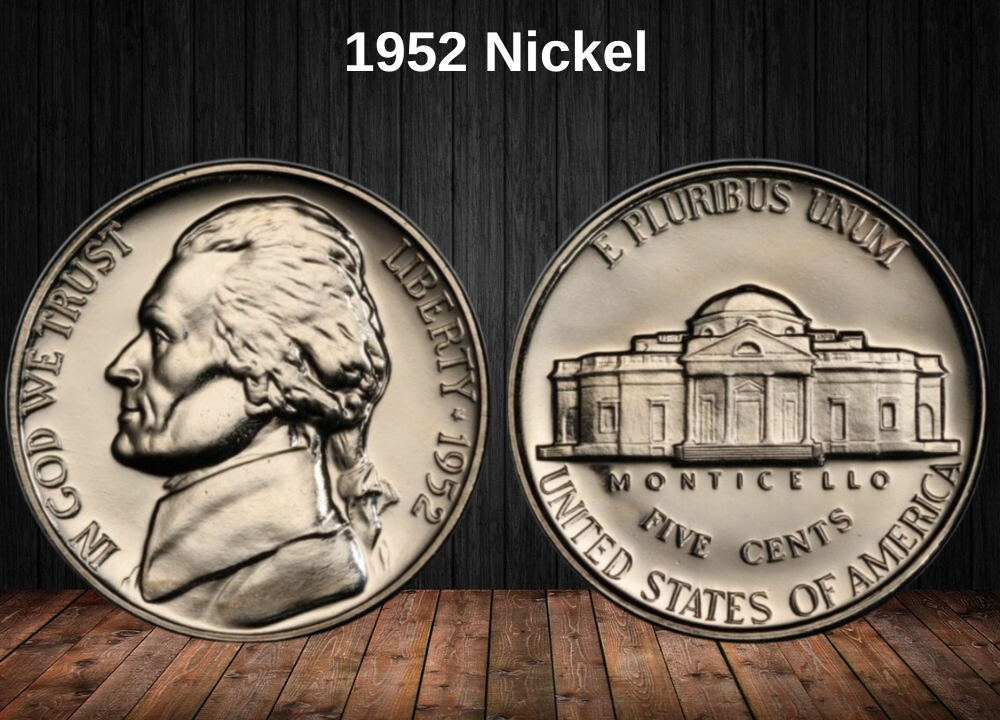
Before the coin was popularly known as the nickel, the five-cent piece was originally called the Half Dime (sometimes spelled Half Disme, with a silent “s”). This can seem confusing today, especially since nickels are physically larger than dimes. However, there’s a logical explanation rooted in the coinage system’s history.
In the early years, most U.S. coins were made from precious metals like silver and gold, often referred to as specie metals. Over time, economic and practical considerations led the U.S. Mint to transition many coins to base metals such as copper, nickel, zinc, and steel.
Why Dimes Are Smaller Than Nickels
The dime (worth 10 cents) retained its silver content longer than the Half Dime (5 cents). Because silver had intrinsic value, the dime’s smaller size ensured its face value remained less than its melt value—the price of silver in the metal itself. This meant the dime could circulate without being melted down for profit.
Today, although both nickels and dimes are made of base metals, the size difference remains as a legacy of this historical pricing strategy.
The Nickel’s Metal Composition
The nickel was the first U.S. coin to experiment with the now-standard alloy of 75% copper and 25% nickel, introduced in 1866. This combination still forms the composition of the five-cent coin and serves as the outer cladding layer on many other U.S. coins.
The Politics Behind Early Nickels
Interestingly, the nickel was not meant to be a permanent fixture. As Mint Director James Pollock explained, it was initially introduced as a temporary replacement for the 5-cent paper note. Pollock was not fond of base-metal coins but wartime shortages of precious metals and the widespread use of unsecured, easily forged regional paper money forced the change.
During this period, the Mint also issued a 2-cent coin made of 95% copper (1864–1873) and a silver 3-cent piece called the “trime” (1851–1873). The 3-cent coin later switched to the copper-nickel alloy, providing valuable experience that led to the nickel’s composition.
Despite initial reservations, nickel producers lobbied to maintain the coin’s composition, and public acceptance grew. Between 1865 and 1889, the 3-cent nickel circulated widely until it was phased out. The 5-cent nickel, now simply called the “nickel,” became the smallest silver-colored denomination, second only to the 95% copper penny in lower face value.
Unique Design Features of the Jefferson Nickel
Among currently circulating U.S. coins, the Jefferson nickel is unique because the phrase “United States of America” appears at the bottom of the reverse (tails) side, whereas on most coins it’s positioned at the top.
This design choice dates back to the coin’s original designer, Felix Oscar Schlag, in 1938. Although asked to reposition the inscription, Schlag never changed it.
Between 2004 and 2005, during the Westward Journey Series commemorating the Lewis and Clark Expedition’s bicentennial, the inscription moved to the top on specially designed nickels. These coins featured four unique reverse designs and a special obverse in 2005.
However, in 2006, the original reverse design—with “United States of America” at the bottom—was restored. This was largely thanks to Virginia Representative Eric Cantor, who successfully introduced legislation ensuring that Monticello, Jefferson’s historic home depicted on the nickel’s reverse, would remain an official part of the coin’s design.
Features Of The 1952 Nickel
The Obverse Of The 1952 Nickel
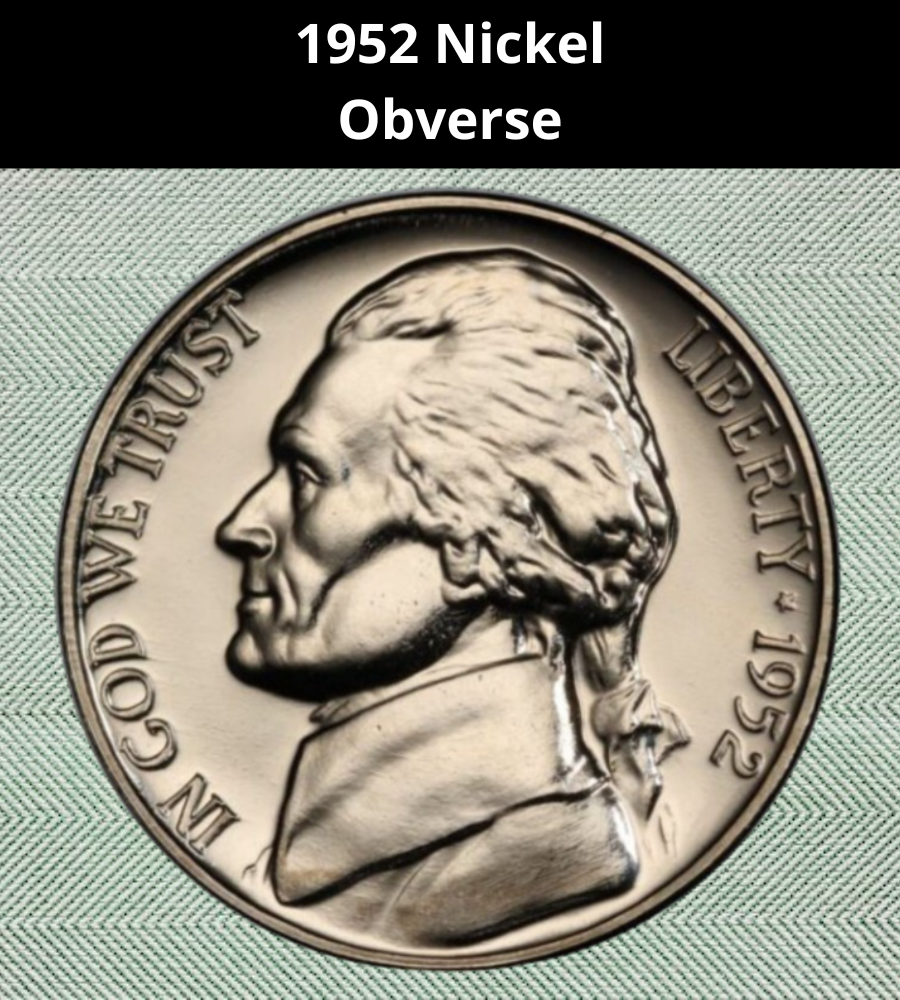
The front, or obverse, of the 1952 nickel features a portrait of Thomas Jefferson, the third President of the United States. To the left of Jefferson’s profile is the motto “IN GOD WE TRUST.” Behind his image, you’ll find the word “LIBERTY”, followed by a star and the date “1952.”
This year’s obverse design stands out from other issues in a few important ways. Notably, it lacks the designer’s initials, which were only added starting in 1966. Additionally, the 1952 nickel does not have an obverse mint mark, making it distinctive among some other years.
The Reverse of the 1952 Nickel
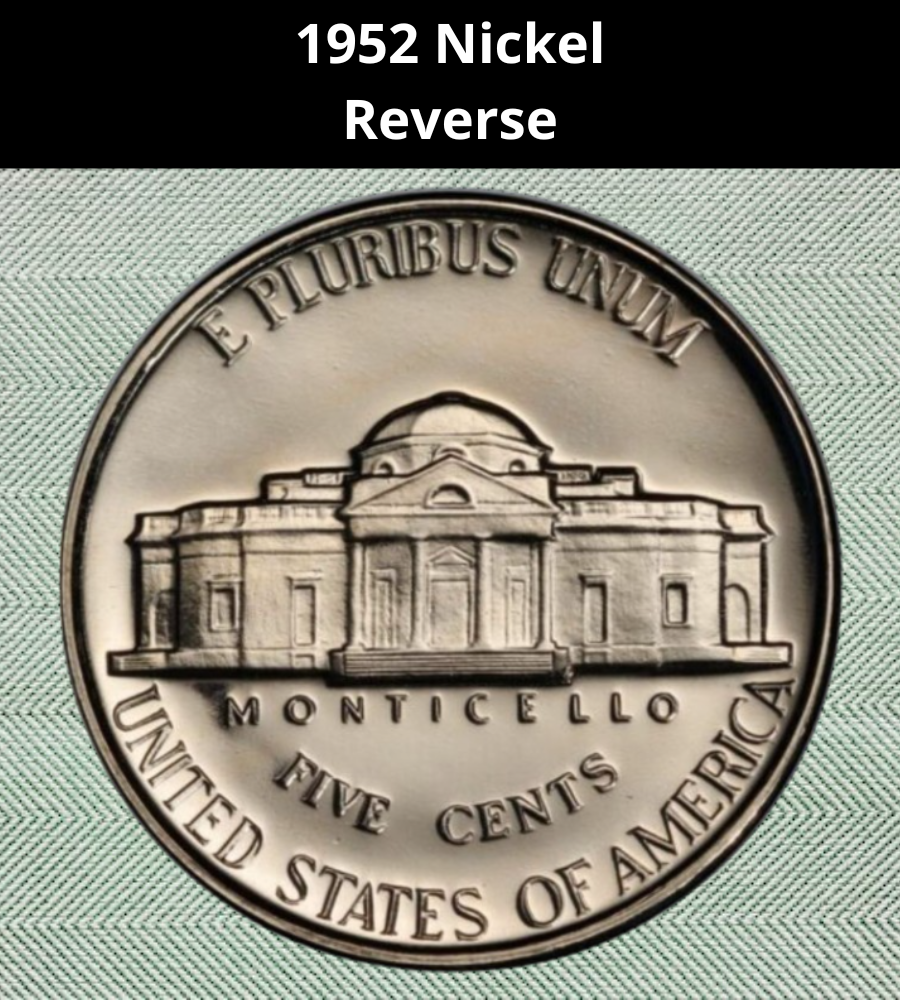
The back, or reverse, of the 1952 nickel depicts Monticello, the historic Virginia estate of Thomas Jefferson. Directly beneath the image of the mansion is the word “MONTICELLO.” Below that appears the coin’s denomination, “FIVE CENTS.”
Along the lower edge of the coin, the phrase “UNITED STATES OF AMERICA” curves gracefully from one side of the building to the other. At the top rim, the motto “E PLURIBUS UNUM” is inscribed.
For nickels minted in Denver or San Francisco, the mint mark is located to the right of Monticello, adding a small but important detail for collectors.
Other Features of the 1952 Nickel
The 1952 nickel is composed of 75% copper and 25% nickel, giving it its characteristic silver-like appearance. It measures 21.21 mm in diameter and has a thickness of 1.95 mm. The coin features a plain (smooth) edge, meaning it does not have any reeded or serrated edges. It weighs exactly 5 grams.
Beyond the standard Sheldon grading scale, collectors also assess Jefferson nickels by examining the clarity of the Monticello staircase on the reverse side. The most valuable nickels are those with 5 or 6 fully defined steps, known as Full Steps (FS) varieties, which can significantly increase a coin’s worth.
1952 Nickel Grading Guide
As mentioned earlier, 5FS and 6FS refer to coins where you can clearly see and count five to six steps on the staircase of Monticello’s reverse. These Full Steps varieties are considered premium and often command higher prices.
Beyond Full Steps, Jefferson nickels—including those from 1952—are graded on the Sheldon Scale, which ranges from 1 to 70:
| Grade | Description |
|---|---|
| 1 | Basal State – Poor |
| 2 | Fair |
| 3 | Very Fair |
| 4, 5, 6 | Good |
| 7, 8, 10 | Very Good |
| 12, 15 | Fine |
| 20, 30 | Very Fine |
| 40 | Extremely Fine |
| 50 | About Uncirculated |
| 60 | Mint State |
| 65 | Mint State |
| 70 | Mint State (Perfect) |
Before you consider paying for a professional appraisal, it’s helpful to use online grading guides and resources to get a rough idea of your coin’s grade. This step is essential for accurately estimating your coin’s value.
1952 Nickel Value Guides
1952-D Nickel Value
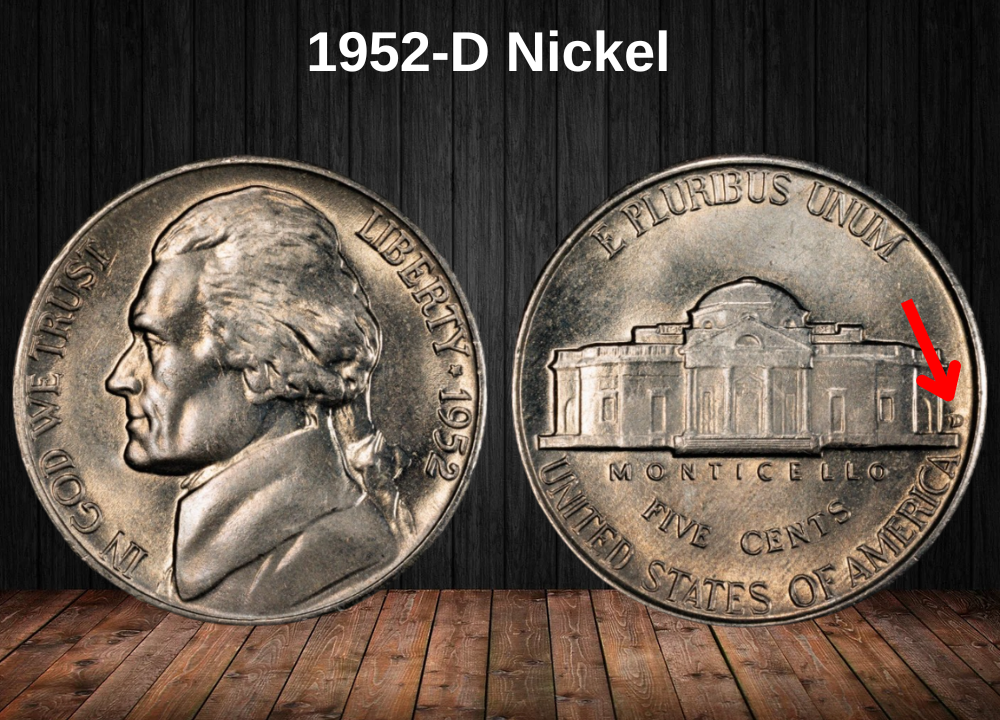
In 1952, the Denver Mint produced approximately 30,638,000 nickels, all bearing the “D” mint mark.
The highest grade recorded for a 1952-D nickel is MS 67, with one such coin selling for $1,093 in 2006. As of March 2025, the grading authority PCGS has authenticated nearly 7 coins at MS 67, setting the current value around $450.
More common are nickels graded MS 66, with over 400 specimens known. These typically sell for about $22 today.
For the coveted Full Steps (FS) variety, the market is more competitive. An MS 67 FS 1952-D nickel fetched $16,450 in 2015, but with 7 known examples now, the price has adjusted to roughly $6,000.
1952-S Nickel Value
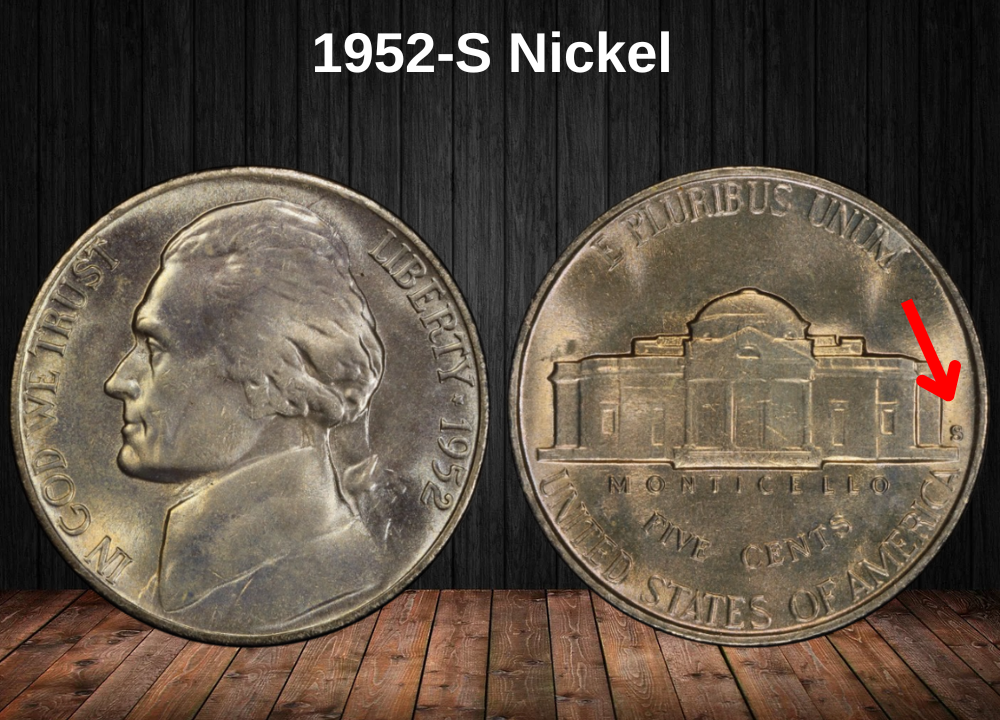
In 1952, the San Francisco Mint produced about 20,572,000 nickels, all marked with an “S” mint mark.
An MS 67 specimen sold for $845 on eBay in June 2023, prompting PCGS to value the 7 known coins at approximately $575 as of March 2025.
Among Full Steps varieties, an MS 66 FS sold for $9,488 in 2007. Since nearly 60 of these coins are known today, their market value has adjusted to about $1,000.
Higher-grade Full Steps coins command premiums:
- An MS 66+ FS is valued around $1,150
- An MS 67 FS commands roughly $9,500
1952 No Mint Mark Nickel Value
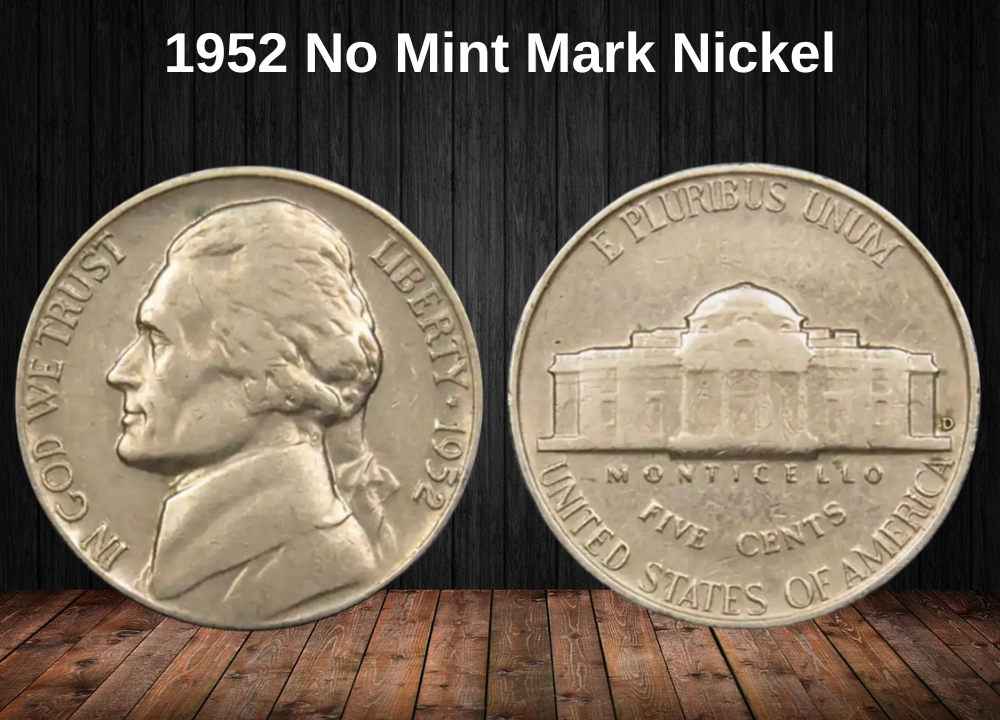
The Philadelphia Mint produced approximately 63,988,000 nickels in 1952, all without a mint mark.
In June 2016, a coin graded MS 67+ sold for $3,995. However, by March 2025, its value has decreased to around $1,850.
For the coveted Full Steps (FS) variety, an MS 66 FS sold for $9,400 in August 2012. With only about 10 of these coins documented by PCGS, the market price as of March 2025 is roughly $2,850.
A higher-grade MS 66+ FS nickel is currently valued at about $8,150.
1952 (P) Proof No Mint Mark Nickel Value
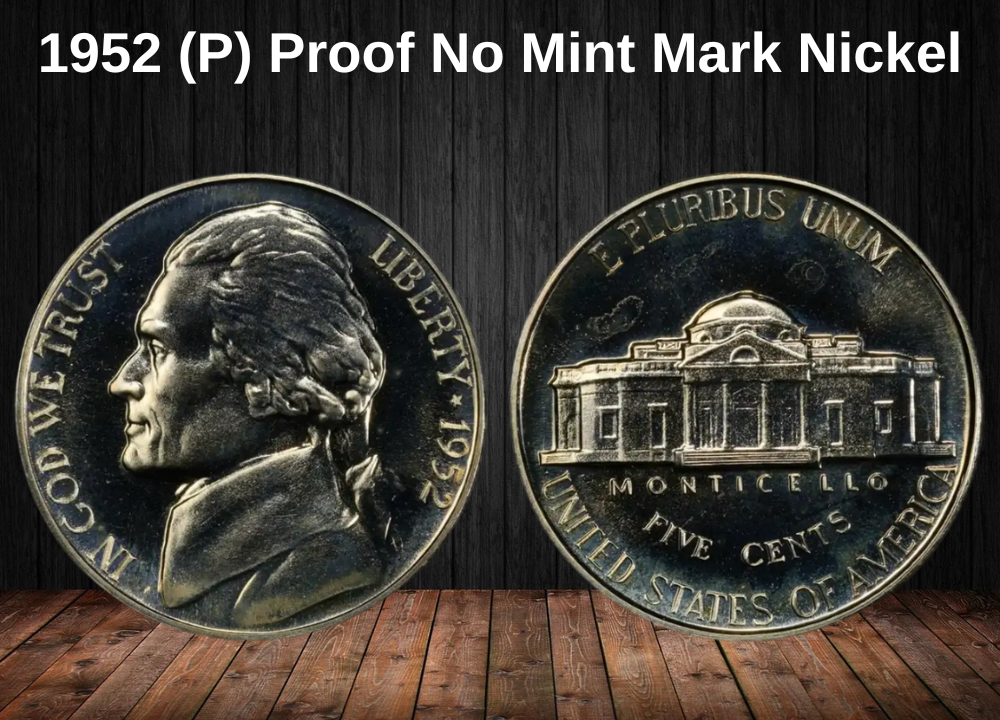
Proof coins are specially struck using unique dies designed to create a stunning mirror-like finish. This effect is achieved through a process where the die is acid-washed to produce a textured, frosted appearance on the raised design elements, while the coin’s flat background (the “field”) is meticulously polished—often with horsehair brushes—to create a smooth, reflective surface. This contrast is what gives proof coins their characteristic cameo look.
However, this acid-washed effect wears off after about 50 to 100 strikes, causing the most dramatic proof contrasts to be found only on the earliest coins struck. Proofs are categorized by the intensity of this contrast:
- Deep Cameo (DCAM) or Ultra Cameo show the strongest contrast
- Cameo refers to coins with moderate contrast
Proof blanks also undergo special preparation before striking. They are tumbled in vats with tiny stainless steel balls to create an ultra-smooth, reflective surface.
In 1952, the Philadelphia Mint produced approximately 81,980 proof nickels, all without a mint mark.
Recent market values for these proofs include:
- A PR 69 grade sold for $1,200 in 2018 and is valued at $1,500 today
- A PR 68 Cameo coin sold for $2,585 in 2013, but its current value has dropped to $550
- A PR 68 Deep Cameo (DCAM) fetched $14,950 in 2010 and is now valued at around $4,600
- The top-tier PR 69 DCAM proof is worth approximately $12,000
Rare 1952 Nickel Errors List
1952 (P) Proof Nickel Re-engraved Obverse Varieties (FS-401 to FS-404)
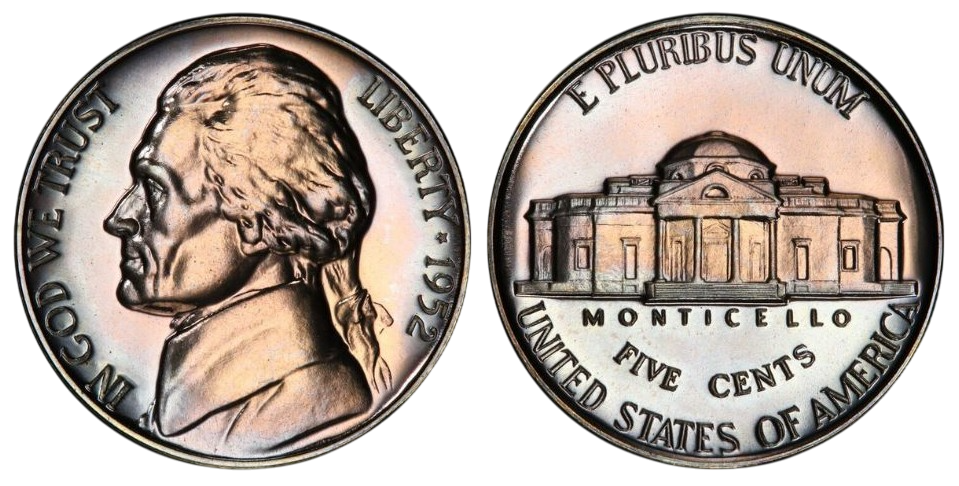
This group is not classified as an error but rather a set of four distinct varieties created when a mint worker attempted to re-engrave and refresh an aging proof die at the Philadelphia Mint.
These varieties are cataloged as FS-401 through FS-404, each showing subtle differences in the obverse design details.
Recent auction prices on eBay demonstrate the market interest:
- An FS-401 PR 68 sold for $495 in 2019
- An FS-402 PR 67 went for $378 in 2021
- An FS-403 PR 68 reached $600 in 2018
- An FS-404 PR 68 sold for $500 in 2019
- The FS-404 PR 68 Deep Cameo (DCAM) variety commanded $1,850 in 2021
1952-D Nickel – Broadstruck and Cleaned
Normally, the retaining collar or rim ensures that a coin maintains its standard shape, size, thickness, and weight, making it easy to stack and handle. However, in rare cases, the collar fails during the striking process, and the coin gets flattened or expanded by the dies. This results in what’s known as a broadstruck error.
This particular 1952-D Jefferson Nickel displays that broadstruck anomaly, but it has been cleaned, which significantly affects its value. Even though it’s graded MS 60, the cleaning reduces collector interest.
Estimated value: $70
Note: Cleaning a coin can strip away original luster and fine details, often doing more harm than good. Uncleaned error coins are always preferred by serious collectors.
1952 (P) Jefferson Nickel – Broken Planchet (2 Pieces)
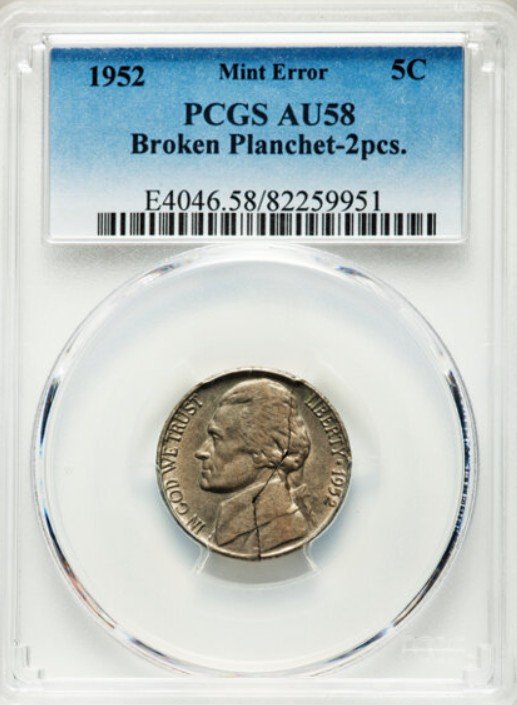
This 1952 Jefferson Nickel stands out because the planchet was defective before striking. Possibly due to a crack or weakness in the metal, the coin split into two pieces when struck by the dies—almost like a jigsaw puzzle.
What makes this example especially valuable is that both halves were found and kept together. Sometimes, coins like this leave the mint barely held together, only to break apart later during handling or circulation.
Grade: AU 58
Sale Price: $180 for the full two-piece set
1952 (P) Jefferson Nickel – Double Struck 90% Off-Center
Normally, coins are struck at least twice to ensure sharp design details. Afterward, feeder fingers remove the coin from the press. But occasionally, there’s a mechanical lag, and the coin gets struck again while it’s being ejected.
In this case, the second strike occurred when the coin was 90% off-center, resulting in a dramatic double image and distorted shape — a visually striking mint error.
Error Type: Double Struck, 90% Off-Center
Grade: MS 62
Sale Price: $190
1952-S Jefferson Nickel – Struck 50% Off-Center
Double strikes and misalignment errors occur when a coin isn’t perfectly positioned between the dies. In this case, the blank shifted before the first strike, leaving a large portion of the coin unstruck and blank.
This type of error is classified by the percentage of off-center misalignment — and here, approximately 50% of the design is missing. Despite the dramatic flaw, the coin retained a strong strike on the visible portion.
Error Type: Struck 50% Off-Center
Mint Mark: S (San Francisco)
Grade: MS 64 FS (Full Steps)
Sale Price: $440+
1952 (P) Jefferson Nickel – Struck on a Dime Planchet
Every U.S. coin has a legally defined weight, diameter, and thickness. But occasionally, a coin is struck on a planchet intended for another denomination — a rare and collectible minting mistake.
In this case, a 1952 Jefferson Nickel was struck on a dime planchet, which is notably smaller:
- Dime diameter: 17.91 mm
- Nickel diameter: 21.21 mm
- Resulting weight: 2.4g instead of the usual 5g
Due to the smaller size, part of the design was cut off, making this error immediately visible and highly desirable among collectors.
Error Type: Wrong Planchet – Struck on a Dime Planchet
Mint: Philadelphia (No Mint Mark)
Grade: AU 55
Sale Price: $470
1952 (P) Jefferson Nickel – Struck on a Penny Planchet

This is another dramatic wrong planchet error, but instead of a dime, this 1952 Jefferson Nickel was mistakenly struck on a 1-cent (penny) planchet.
- Penny planchet: 95% copper, with its distinctive reddish tone
- Penny diameter: 19.05 mm
- Nickel diameter: 21.21 mm
- Resulting weight: Slightly lower than 5g
- Visual cue: Copper color + truncated design
Because of the size difference, parts of the Jefferson Nickel’s design are cut off. The unusual color and off-size make it stand out even at first glance.
Error Type: Wrong Planchet – Struck on a Penny Planchet
Mint: Philadelphia (No Mint Mark)
Grade: MS 63 BN (Brown)
Sale Price: $600
1952 Jefferson Nickels – Split After Strike (Two Pieces)
Sometimes, unusual mint errors can still attract collectors—even in low grades—especially if they’re visually dramatic or sold as a set.
In this case, the coin split edgewise after being struck, resulting in two separate pieces:
- One side of each piece shows a clear, complete design
- The other side reveals a rough, jagged surface from the split
- These were not broken planchets, but post-strike splits
Grade: XF 40 (Extra Fine)
Error Type: Split After Strike – Edgewise Split
Sale Price: $322 (sold as a pair)
Where to sell your nickel?
Now that you’re aware of your nickel’s value, you may be curious about the best places to sell it. Don’t worry: here’s a rundown of some top online marketplaces where you can conveniently sell your nickels, along with their benefits and drawbacks.
Explore the best platforms for selling nickels online (advantages and disadvantages).
FAQ about 1952 Jefferson Nickels
1. Why is the 1952 Jefferson Nickel important to collectors?
The 1952 Jefferson Nickel is a mid-century issue and part of the original Jefferson series that began in 1938. It holds interest due to its various mint marks, strike quality differences between mints, and the presence of minor varieties and errors that appeal to collectors.
2. What are the mint locations and mint marks for 1952 Jefferson Nickels?
The 1952 nickels were struck at three mints:
- Philadelphia (no mint mark)
- Denver (“D” mint mark)
- San Francisco (“S” mint mark)
Philadelphia issues are the most common, while San Francisco strikes are scarcer in high grades due to weaker strikes and lower mintages.
3. Are there valuable mint errors or varieties in 1952 Jefferson Nickels?
Yes. While no major variety is officially recognized in most standard guides, collectors have identified:
- Repunched Mint Marks (RPMs), particularly on “D” and “S” coins
- Die cracks and cuds
- Off-center strikes, and
- Double dies, though less frequently than in other years
These can command premiums depending on the severity and visibility.
4. What is the metal composition of 1952 Jefferson Nickels?
Like most post-WWII Jefferson nickels, the 1952 issue is made of 75% copper and 25% nickel. There is no silver content, unlike wartime nickels (1942–1945).
5. How can a collector distinguish a full steps 1952 Jefferson Nickel?
A Full Steps (FS) nickel shows five or six full, uninterrupted steps at the base of Monticello on the reverse. These are rare, especially in 1952 due to weak strikes—particularly from San Francisco. FS designations are highly valued by collectors and can significantly boost the coin’s market value.
6. Which 1952 Jefferson Nickel is the most valuable in high grade?
The 1952-S Full Steps (FS) variety in Mint State (MS) 65 or higher is particularly rare. PCGS and NGC population reports confirm that only a small number exist in top FS grades, making them highly desirable and worth hundreds or even thousands depending on condition.
7. What is the average value of a circulated 1952 Jefferson Nickel?
In average circulated condition (grades F12–VF20), 1952 nickels typically range from $0.10 to $0.25, mainly for their face value and metal content. Uncirculated and FS examples, however, can be much more valuable.
8. Were proof coins struck in 1952?
Yes. The Philadelphia Mint produced proof Jefferson Nickels in 1952 as part of standard proof sets. These have a brilliant finish and are highly collectible, especially in PR65 and above. Some proof coins may also feature cameo or deep cameo contrast, which adds to their value.
9. How does strike quality vary among 1952 nickels?
- Philadelphia coins typically have decent strikes.
- Denver nickels often have strong detail and are the best candidates for Full Steps.
- San Francisco coins are known for weaker strikes and less defined Monticello steps, making FS examples from “S” mint very scarce.
10. What should collectors watch for when buying a 1952 Jefferson Nickel?
Focus on strike quality, surface preservation, luster, and whether the coin has Full Steps. Also consider professional grading from PCGS or NGC for higher-end coins. Look for die varieties and authenticate any unusual features to avoid altered or counterfeit coins.

